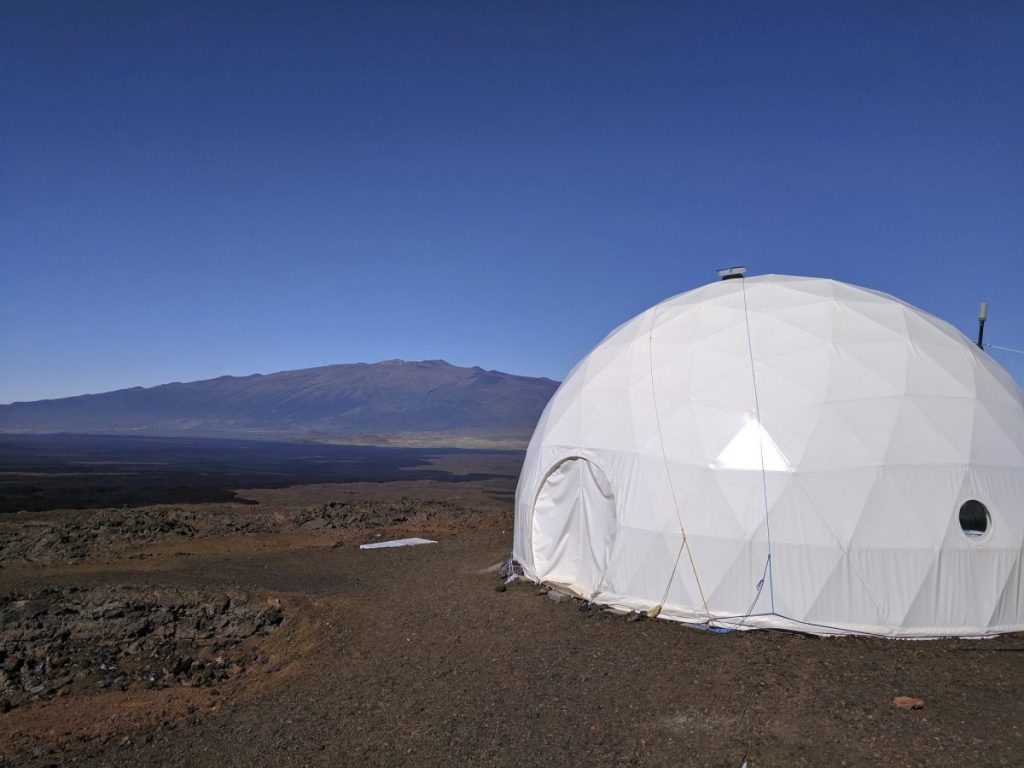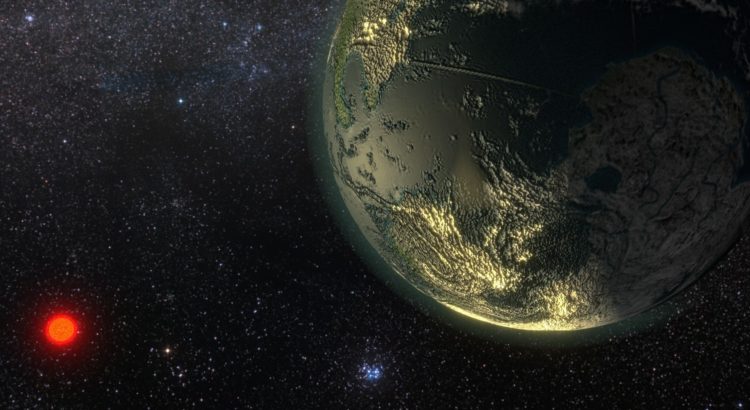They feasted on pineapple and mangos.
Then they had an egg frittata.
The crew of four men and two women spent 8 months below the summit of the Big Island’s Mauna Loa.
Why?
Because they were a part of a study that would allow NASA to understand the psychological impact of a long-term space mission on our astronauts.
We are preparing for MARS.
And getting there requires resilience.
A lot of it.
The six scientists had to stay in close quarters while their response to stress was being monitored by NASA.
According to some of the results, it is impossible to stay outside of conflict even with some of the most well matched participants.
Not only were they isolated from the rest of the world for 8 months, but they wore space suits and ate canned food as well as freeze dried food.
They wanted every moment of their time in isolation to be as close to a Mars-like habitat as possible.

Image Credit University of Hawaii. The geodesic dome called the Hawaii Space Exploration Analog and Simulation, or HI-SEAS, located 8,200 feet above sea level on Mauna Loa on the island of Hawaii, where the six scientists spent 8 months.
“This is our fifth mission, and we have learned a lot over those five missions.
We’ve learned, for one thing, that conflict, even in the best of teams, is going to arise,” Binsted said. “
So what’s really important is to have a crew that, both as individuals and a group, is really resilient, is able to look at that conflict and come back from it.”
Isn’t life all about how we come back from conflict, how we reenter after a difficult time?
Our biggest explorations and adventures for our humanity rely on this.
Choosing members for these kinds of studies should require people who have overcome impossible things already.
They have not mastered resilience but they are able to know what it is like to go through something highly stressful in their lives.
Without the experience of hardship, how can anyone get on a spaceship for 2 or 3 years in small quarters and arrive on MARS with not only some emotional strength still intact but with eagerness to still get out there and do their job as a scientist?
NASA if you are reading, make sure you choose those who have gone through unthinkable things already, they are the ones who can do impossible things.
Here’s to a bigger known world where we seek to find a new life full of wonder and joy even in the midst of isolation eating canned food.
Featured image credit: Nasa
 Christina Rasmussen is the creator and founder of The Life Reentry Institute, Second Firsts, The Life Starters and Star Letters. Christina is on a crusade to help millions of people rebuild, reclaim, and relaunch their lives using the power of their own minds. Christina’s work has been featured on ABC News, NPR, The White House Blog, and MariaShriver.com. She is the bestselling author of Second Firsts: Live, Laugh, and Love Again, which has also been translated in Chinese and German and is currently working on her second book on expanding the mind in ways that allows co creation with the forces of the universe. She is also writing her first work of fiction: a science fiction story about a woman on a quest to start over and begin a new life.
Christina Rasmussen is the creator and founder of The Life Reentry Institute, Second Firsts, The Life Starters and Star Letters. Christina is on a crusade to help millions of people rebuild, reclaim, and relaunch their lives using the power of their own minds. Christina’s work has been featured on ABC News, NPR, The White House Blog, and MariaShriver.com. She is the bestselling author of Second Firsts: Live, Laugh, and Love Again, which has also been translated in Chinese and German and is currently working on her second book on expanding the mind in ways that allows co creation with the forces of the universe. She is also writing her first work of fiction: a science fiction story about a woman on a quest to start over and begin a new life.








